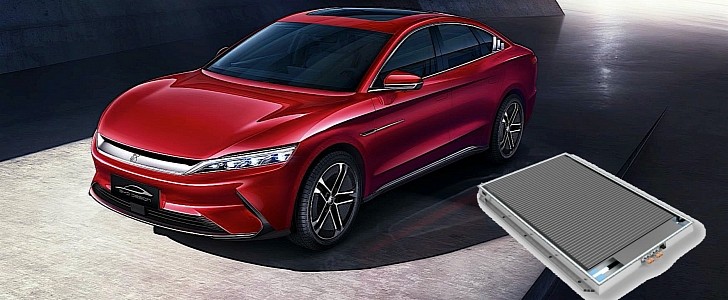How long does it take for the most expensive component in a flagship vehicle to spread to all the lineup? In regular cars, that usually takes years or – sometimes – never happens. When it comes to the BYD Han, that took a little more than one year to happen. According to the Chinese press, all the electric vehicles from that company now present Blade Batteries.
We have already told you that the BYD Dolphin will be the first to use the e-platform 3.0, which works at 800V. Even in such a configuration, the EV also presents Blade Batteries. Their advantage lies in their chemistry and also in their structure.
A battery pack with these cells can be arranged as CTP (cell-to-pack). Thanks to that arrangement, they become a structural component of the vehicle and can offer much higher energy density than if they used battery modules.
Thanks to LFP (lithium iron phosphate), these cells are more resistant to thermal runaways and fires. It also lasts a lot longer than ternary cells. According to BYD, the Blade Battery would last for 1.2 million kilometers (745,645.4 miles). That will save owners of concerns with replacing the battery pack, which is currently causing headaches to Nissan Leaf drivers.
BYD revealed another reason for the Blade Batteries to have been adopted so fast by all the company’s products. According to Yicai Global, the automaker would have managed to reduce the price of these cells to RMB600/kWh ($92.60/kWh at the current exchange rate).
That article actually speaks about reducing the costs in RMB600, but that seems to be a translation mistake: LFP batteries are already much cheaper than ternary cells. If their cost were reduced by that much, BYD’s cars would use them for free.
That is a significant number. The industry established that $100/kWh was the limit below which EVs would reach production cost parity with combustion-engined cars. In other words, the Blade Battery may make BYD’s electric offerings cheaper than those with internal combustion engines.
The Blade Battery is produced by a BYD spin-off called Fudi Battery. Since the start of production in March 2020, the company has set eight production lines for them, with a current capacity of 20 GWh. The plan is to produce up to 35 GWh in the same factory in Chongqing. If BYD decides to accelerate its international expansion, it will have to think about producing Blade Batteries in more factories.
A battery pack with these cells can be arranged as CTP (cell-to-pack). Thanks to that arrangement, they become a structural component of the vehicle and can offer much higher energy density than if they used battery modules.
Thanks to LFP (lithium iron phosphate), these cells are more resistant to thermal runaways and fires. It also lasts a lot longer than ternary cells. According to BYD, the Blade Battery would last for 1.2 million kilometers (745,645.4 miles). That will save owners of concerns with replacing the battery pack, which is currently causing headaches to Nissan Leaf drivers.
BYD revealed another reason for the Blade Batteries to have been adopted so fast by all the company’s products. According to Yicai Global, the automaker would have managed to reduce the price of these cells to RMB600/kWh ($92.60/kWh at the current exchange rate).
That article actually speaks about reducing the costs in RMB600, but that seems to be a translation mistake: LFP batteries are already much cheaper than ternary cells. If their cost were reduced by that much, BYD’s cars would use them for free.
That is a significant number. The industry established that $100/kWh was the limit below which EVs would reach production cost parity with combustion-engined cars. In other words, the Blade Battery may make BYD’s electric offerings cheaper than those with internal combustion engines.
The Blade Battery is produced by a BYD spin-off called Fudi Battery. Since the start of production in March 2020, the company has set eight production lines for them, with a current capacity of 20 GWh. The plan is to produce up to 35 GWh in the same factory in Chongqing. If BYD decides to accelerate its international expansion, it will have to think about producing Blade Batteries in more factories.










